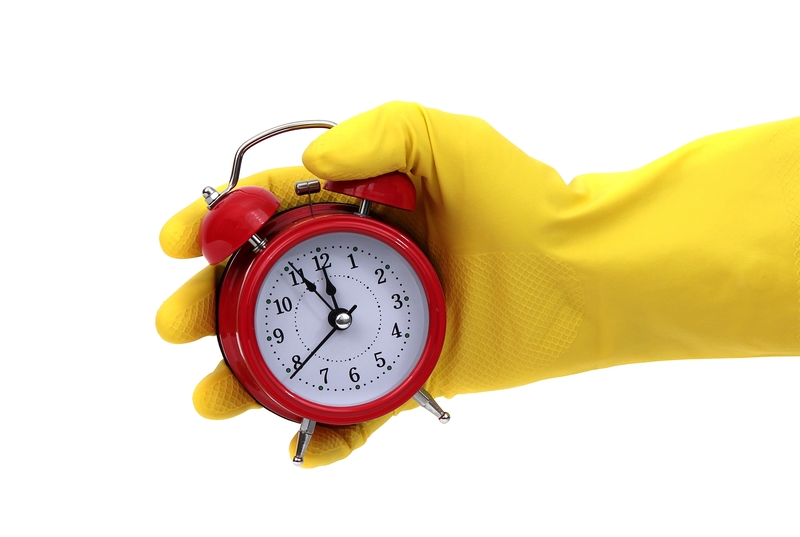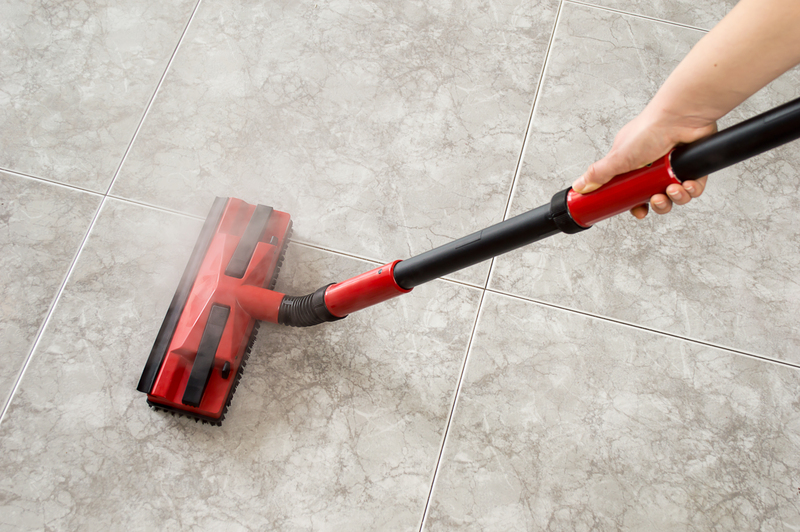Grease Liberated: Simplified Cleaning of Enamel Oven Trays
Posted on 30/08/2025
Grease Liberated: Simplified Cleaning of Enamel Oven Trays
When it comes to baking and roasting, enamel oven trays are true kitchen workhorses. However, anyone who enjoys home-cooked meals knows the struggle of dealing with stubborn grease and grime. Grease liberated means reclaiming your trays from baked-on bits and persistent stains, so your cookware remains spotless and safe. This comprehensive guide offers foolproof methods for simplified cleaning of enamel oven trays, ensuring sparkling results every time.

Why Proper Cleaning of Enamel Oven Trays Matters
Enamel oven trays are prized for their non-stick surface, durability, and heat distribution. Yet, neglecting them can lead to dullness, discoloration, and eventually, diminished cooking performance. Here's why regular cleaning is essential:
- Prolongs Lifespan: Proper care preserves the integrity of the enamel coating, helping trays last for years.
- Prevents Flavors Transfer: Grease and old residues can compromise taste, transferring burnt flavors to new dishes.
- Ensures Hygiene: Thorough cleaning eliminates bacteria and food particles, keeping your kitchen safe and healthy.
- Keeps Appearance Pristine: A well-maintained tray looks inviting, reflecting high culinary standards.
Understanding Enamel Oven Trays
Before delving into grease liberation techniques, it's important to understand why enamel-coated oven trays behave the way they do. Enamel is essentially a fused glass layer over metal, designed to resist staining and sticking. However, prolonged exposure to high temperatures, acidic foods, or abrasive scrubbing can compromise the surface, leading to stubborn grease and food adhesion.
Did you know? Regular dish soaps may not always cut through heavy oven grease. Specialized methods are needed to maintain your trays' brilliance and performance.
Common Challenges in Cleaning Enamel Oven Trays
- Baked-On Grease: High heat solidifies fats, forming a tough, sticky layer that resists simple washing.
- Burnt Residues: Overcooked spills carbonize onto the enamel, becoming blackened and clingy.
- Staining: Spices, sauces, and repeated use can gradually discolor even the sturdiest enamel.
- Abrasion and Scratching: Aggressive scrubbers may mar the surface, inviting even more buildup in future.
Essential Tools and Supplies for Grease Removal
Get the best results from grease liberation with the right arsenal:
- Soft Sponges and Microfiber Cloths: Ideal for everyday cleaning and gentle on the enamel.
- Non-Abrasive Scrub Pads: For effective scrubbing without scratching the surface.
- Baking Soda: A natural abrasive and deodorizer, perfect for tackling stuck-on messes.
- White Vinegar: Cuts through stubborn grease and neutralizes odors.
- Dishwashing Soap: Mild formulas protect the enamel while removing fresh grease.
- Plastic Scrapers: Help lift large residues without damaging the coating.
- Rubber Gloves: Protect your hands during intensive cleaning sessions.
Methods for Simplified Cleaning of Enamel Oven Trays
1. Routine Cleaning After Each Use
Routine maintenance is key to keeping trays grease-free and gleaming. Follow these simple steps after every use:
- Allow the tray to cool completely to avoid warping or burns.
- Rinse off loose crumbs and debris under warm, running water.
- Add a small amount of mild dish soap to a soft sponge or cloth.
- Gently wipe the surface, focusing on greasy spots. Avoid using abrasive pads.
- Rinse thoroughly and dry with a clean microfiber towel to prevent water spots and rust on exposed metal edges.
2. Grease Liberation for Stubborn Stains
When routine cleaning isn't enough, it's time to liberate your enamel tray from stubborn grease and burnt-on residues.
- Step 1: Make a Cleaning Paste
- Mix equal parts baking soda and water into a thick paste.
- Step 2: Apply and Rest
- Spread the paste evenly over stained or greasy areas. Let sit for at least 30 minutes (or overnight for severe stains).
- Step 3: Gentle Scrubbing
- Using a non-abrasive pad, gently scrub the tray in circular motions. Plastic scrapers can help lift persistent residues.
- Step 4: Rinse and Inspect
- Rinse thoroughly. Repeat the process for any remaining stubborn spots.
3. Deep Cleaning With Vinegar
Enamel oven tray cleaning becomes more effective when you harness the grease-cutting power of vinegar.
- Fill the tray with hot water and add one cup of white vinegar.
- Allow the solution to soak for at least 45 minutes (for heavy build-up, leave for several hours or overnight).
- Pour off the solution and sprinkle a generous amount of baking soda onto the surface.
- Agitate with a non-abrasive scrub pad, focusing on greasy patches.
- Rinse and dry thoroughly.
4. Oven Cleaner (As A Last Resort)
Commercial oven cleaners can remove heavy carbonization and liberate the enamel tray from the most persistent grease. However, these chemicals are potent and should be used sparingly:
- Always use gloves and ventilate the area.
- Apply a small amount of oven cleaner to affected areas only, following the manufacturer's instructions.
- Allow to work for the recommended time, then scrub with a non-abrasive pad.
- Rinse thoroughly to ensure no chemical residue remains, as this can affect future food safety.
Note: Some enamel manufacturers advise against oven cleaners, so check your product guides before applying chemical solutions.
Do's and Don'ts of Grease Liberation
- Do always allow the tray to cool before cleaning to avoid warping.
- Do use gentle circular motions for scrubbing to prevent enamel damage.
- Do soak trays regularly to make grease removal easier.
- Don't use metal scouring pads, steel wool, or harsh abrasives.
- Don't use bleach or highly acidic cleaners unless the manufacturer certifies it's safe.
- Don't leave trays to soak for excessive periods, as this can loosen the enamel over time.
- Do thoroughly dry the tray to prevent rust on any exposed metal.
Natural Alternatives for Enamel Tray Cleaning
If you're keen on eco-friendly solutions, nature provides some of the best ingredients for liberating grease from oven trays:
- Lemon: The high acid content dissolves grease and leaves a fresh scent. Cut a lemon in half, scrub the tray, then rinse clean.
- Baking Soda & Salt Combo: For a slightly more abrasive effect, sprinkle salt with baking soda and scrub with a dampened sponge.
- Hydrogen Peroxide & Baking Soda: For extremely tough stains, make a paste with hydrogen peroxide and baking soda. Let it sit before gently scrubbing.
These home remedies are safe and effective, keeping your enamel oven trays gleaming without harsh chemicals!
Preventing Grease and Stains--Care Tips for Longevity
The best way to reduce cleaning headaches is by preventing stains and grease buildup in the first place. Here's how:
- Use Parchment Paper or Silicone Mats: These liners catch drips and splatters, sparing your tray from direct contact with food and oil.
- Avoid Aerosol Cooking Sprays: These can leave hard-to-remove residues that build up over time. Opt for brush-on oils if you need some lubrication.
- Don't Broil Beyond Enamel's Limit: High broil settings may scorch enamel and accelerate grease adhesion. Stick to manufacturer recommendations for temperature limits.
- Regular Cleaning: Don't let grease and food residues sit. Cleaning soon after each use prevents tough, stuck-on messes.

Troubleshooting: Frequently Asked Questions About Cleaning Enamel Oven Trays
Can I use a dishwasher for my enamel tray?
Many enamel trays are dishwasher safe, but persistent grease might not lift off in one cycle. Moreover, repeated machine washing may dull the sheen over time. Hand washing with gentle tools preserves appearance and coating longevity.
How often should I deep clean my enamel oven tray?
Deep cleaning (using paste, vinegar soaks, or commercial solutions) should be performed every 3-4 uses, or whenever you notice build-up, sticky patches, or burnt stains.
What should I do if there's discoloration I can't remove?
Some discoloration (especially from spices or roasted vegetables) may be harmless. If regular cleaning and natural pastes don't restore brightness, this is usually cosmetic and does not affect performance. Avoid harsh chemicals or abrasive scrubbing to 'polish it away', as this can damage the enamel.
Are chemical oven cleaners safe for all enamel trays?
Not always. Aggressive cleaners may etch or cloud some enamel coatings, especially older or lower-quality trays. Always test in a small area or consult your manufacturer before using strong chemicals.
Summing Up: Embrace Grease Liberation for a Healthier Kitchen
By adopting these strategies, you'll enjoy sparkling trays, delicious meals, and prolonged lifespan for your kitchen essentials--the true promise of grease liberation.
Ready to reclaim your enamel oven trays from grease and grime?
Try these tips today and experience the satisfaction of a sparkling, healthy, and well-maintained baking arsenal. Your culinary creations will thank you!
Happy Cleaning!


